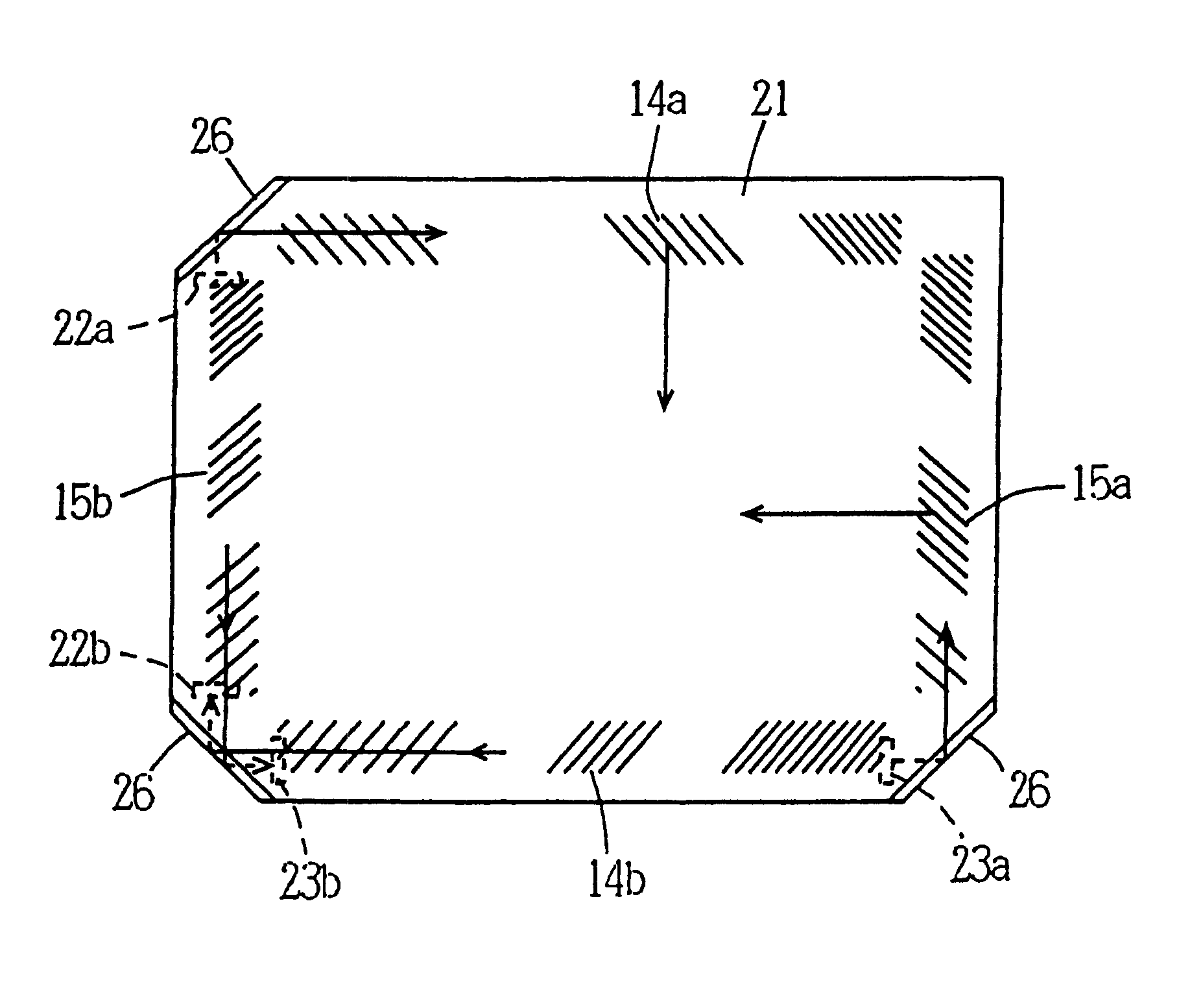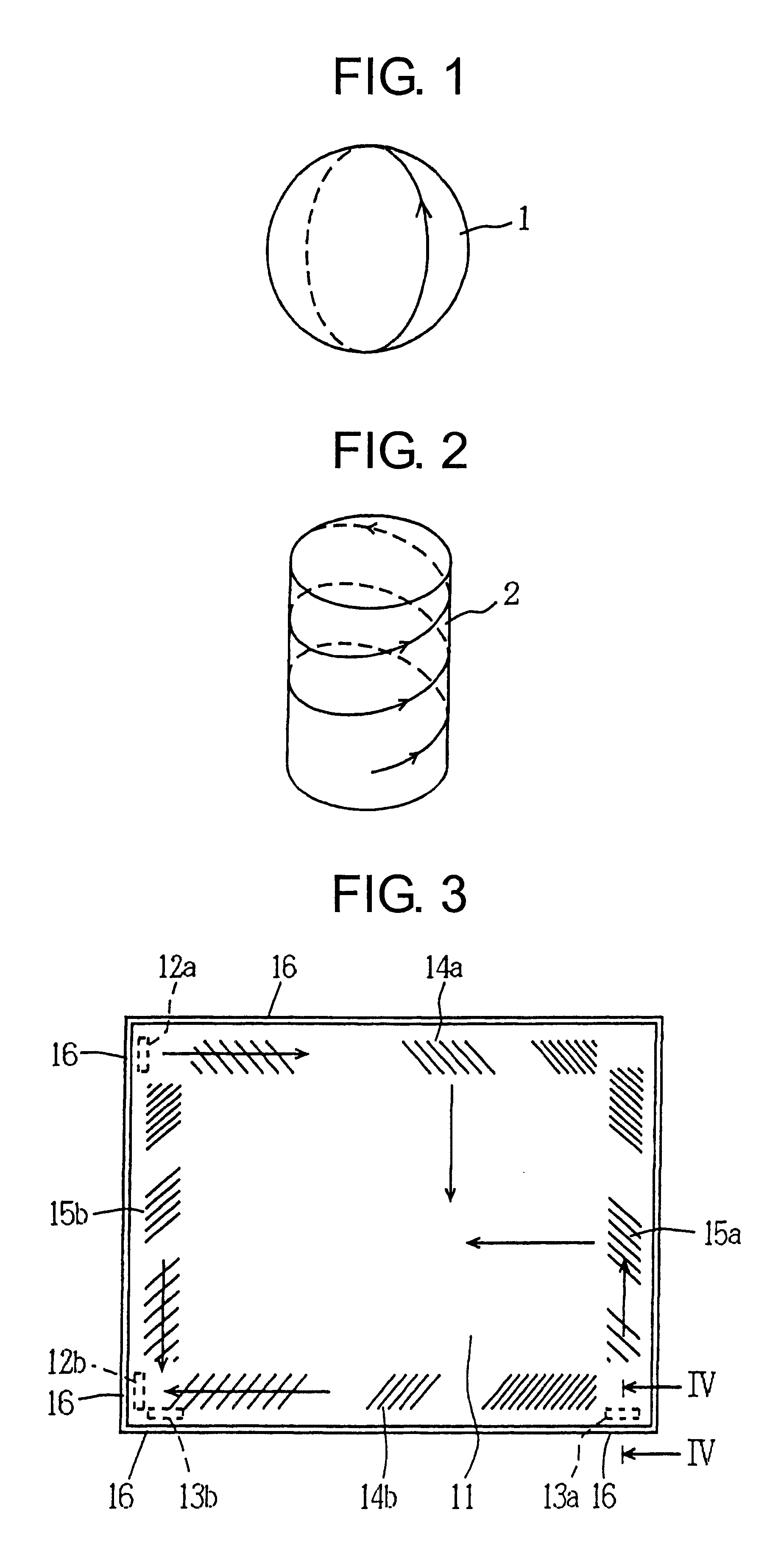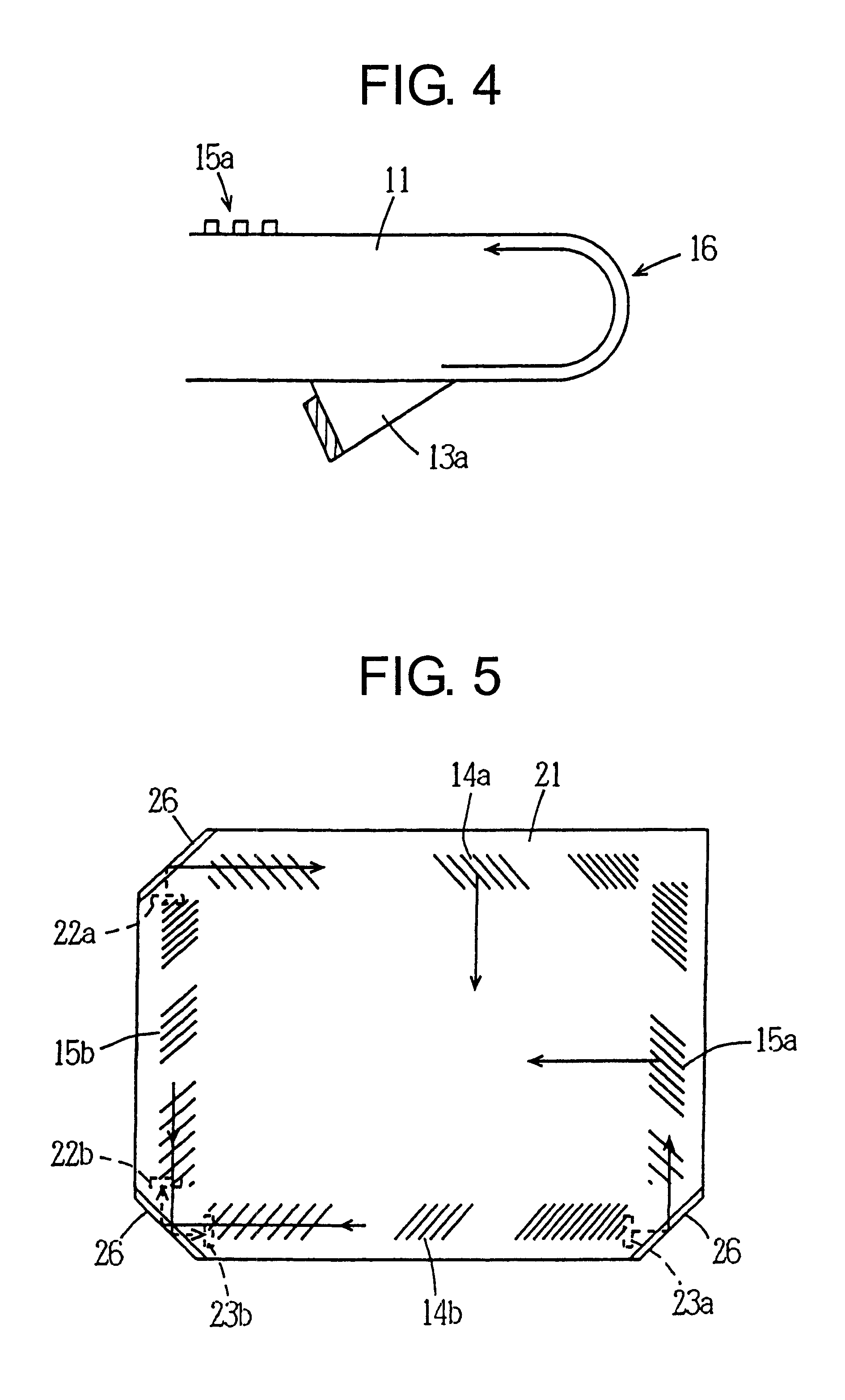Touch panel
a technology of touch panel and display panel, which is applied in the field of touch panel, can solve the problems of increased cost, complicated circuit structure and signal processing, and difficulty in arranging liquid crystal display apparatus (lcd), and achieve the effect of reducing the number of transducers
- Summary
- Abstract
- Description
- Claims
- Application Information
AI Technical Summary
Benefits of technology
Problems solved by technology
Method used
Image
Examples
example 1
A touch panel for 10.4-inch LCD monitor having the structure shown in FIG. 3 was fabricated using 2.8 mm thickness of soda glass substrate. As a transducer, a plastic wedge-shaped transducer (of about 3 mm height), to which a piezoelectric resonator (of 5.5 MHz resonance frequency) is mounted by an ultraviolet-ray setting adhesive, was applied. A reflecting array was formed by providing a pair of the reflecting array for oscillating side and the reflecting array for receiving side on the peripheral portion of the surface of the glass substrate respectively in the X-axis and Y-axis directions using glass paste by the screen-printing process and firing at 450.degree. C., based upon the Japanese Patent Laid-Open Publication No. 61-239322.
Electric wire cables were connected with the electrode of each piezoelectric resonator by soldering, and these electric wire cables were then connected to a controller through a connector. As a controller, a commercially available ultrasonic system con...
example 2
A touch panel for 15-inch dome-shaped CRT monitor having the structure shown in FIG. 5 was fabricated using 2.8 mm thickness of soda glass substrate. A transducer and reflecting array were formed in the same manner as described above. Electric wire cables were connected to electrodes of each piezoelectric resonator by soldering, and these electric wire cables were connected to a controller through a connector. As a controller, a commercially available ultrasonic system controller (1055E101, made by Touch Panel Systems Co.) was applied. A personal computer was connected to the controller to analyze received signals and detect input position.
A CRT of the CRT monitor has a rectangular shape including four chamfered corner portions. In the touch panel corresponding to this CRT, transducers are generally placed in the three corner portions. However, in the chamfered rectangular substrate, since the corner portions for mounting the transducers are formed with the radius (R), the slope pro...
PUM
 Login to View More
Login to View More Abstract
Description
Claims
Application Information
 Login to View More
Login to View More - R&D
- Intellectual Property
- Life Sciences
- Materials
- Tech Scout
- Unparalleled Data Quality
- Higher Quality Content
- 60% Fewer Hallucinations
Browse by: Latest US Patents, China's latest patents, Technical Efficacy Thesaurus, Application Domain, Technology Topic, Popular Technical Reports.
© 2025 PatSnap. All rights reserved.Legal|Privacy policy|Modern Slavery Act Transparency Statement|Sitemap|About US| Contact US: help@patsnap.com



